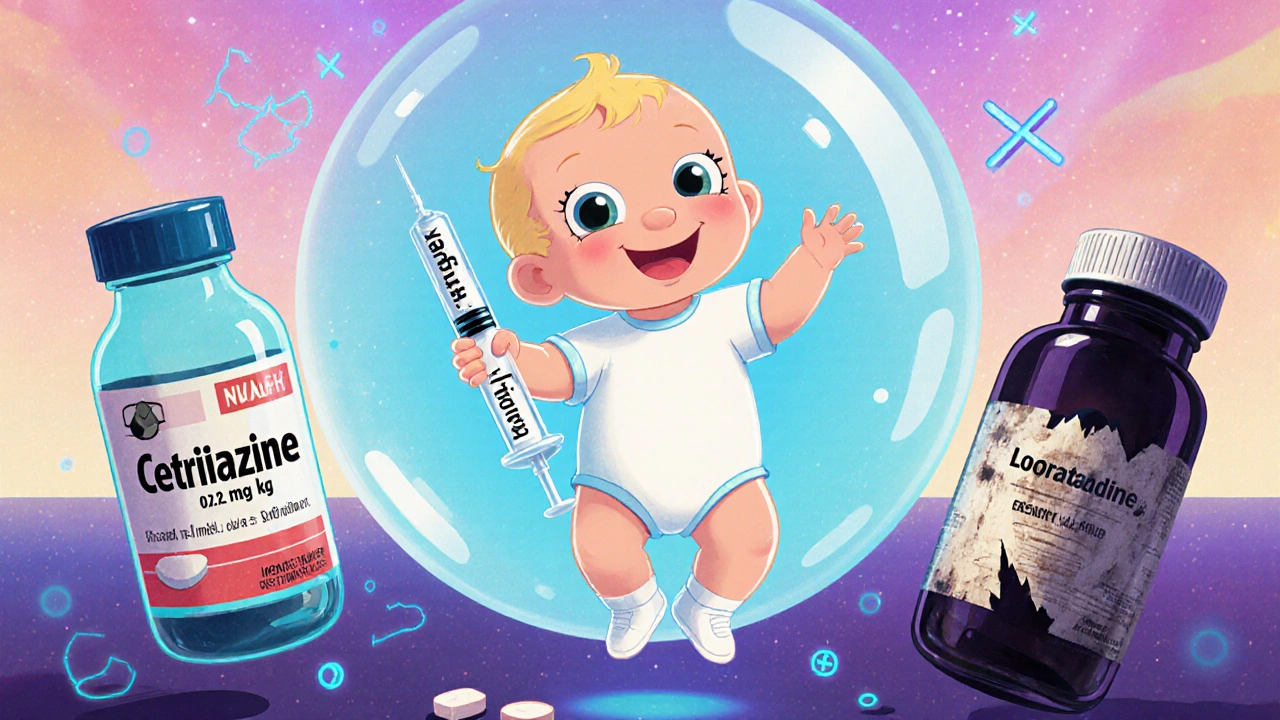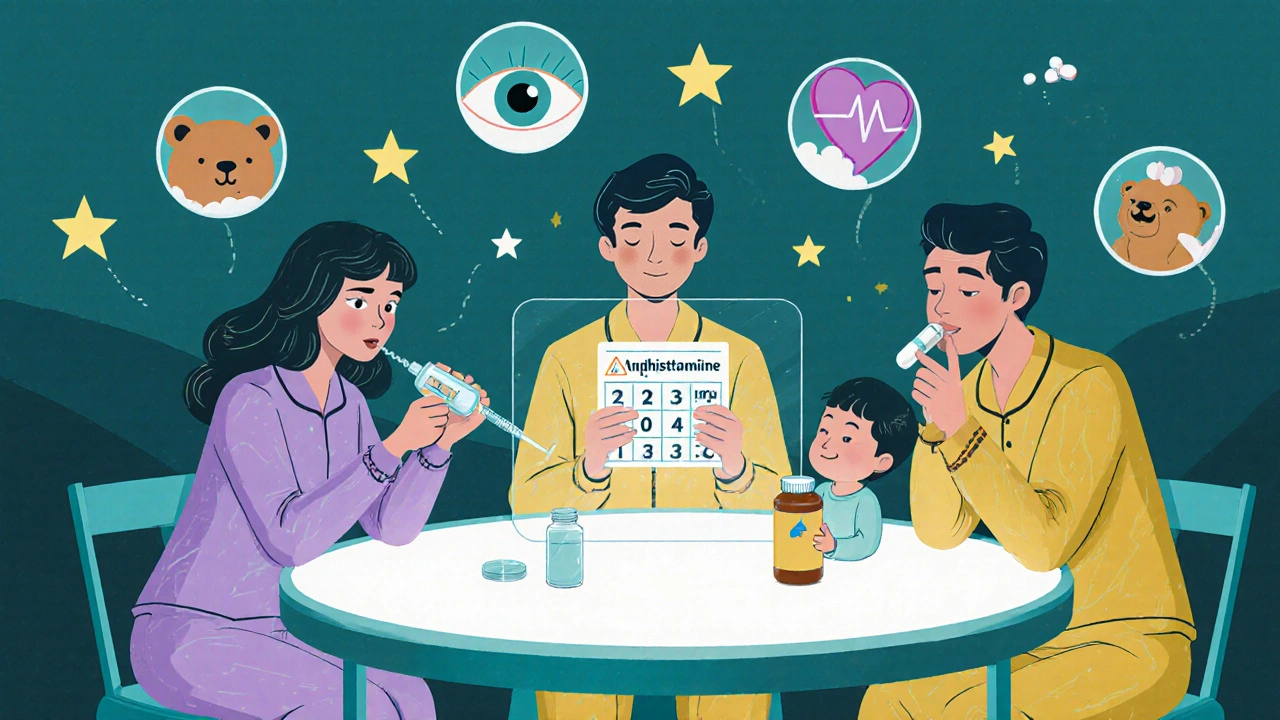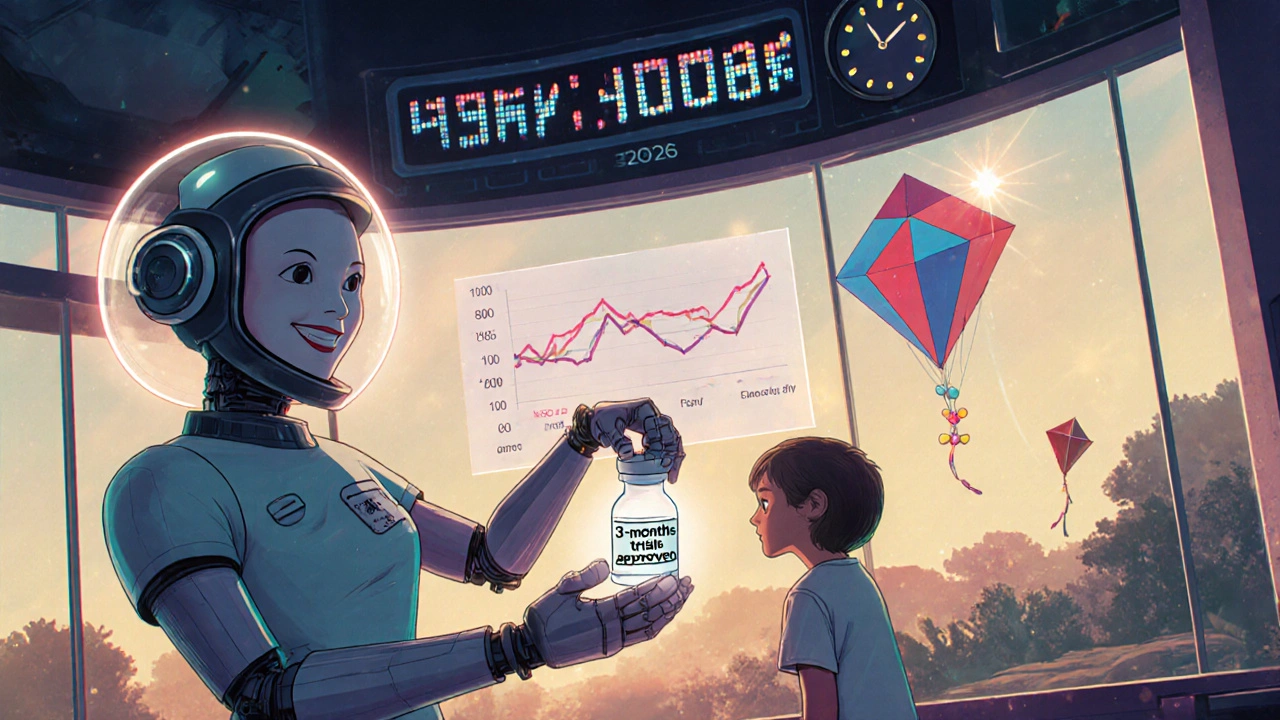Children and Antihistamines: Safe Dosing by Age and What Parents Need to Know

Child Antihistamine Dosing Calculator
Safe Dosing Calculator
Calculate accurate antihistamine doses for children based on current medical guidelines. Always consult your pediatrician before use.
Key Safety Notes
Diphenhydramine is not recommended for children under 2 years without a doctor's order. Use only as directed for allergic reactions, not for sleep aid.
Never give more than one antihistamine at a time. Check all medications for hidden antihistamines.
Emergency Warning
If your child shows:
- Severe drowsiness or confusion
- Rapid heartbeat
- Difficulty breathing
- Agitation or hallucinations
Call Poison Control immediately at 1-800-222-1222
Why Antihistamines for Kids Aren’t One-Size-Fits-All
Parents often reach for antihistamines when their child has a runny nose, itchy rash, or allergic reaction. But not all antihistamines are safe for kids - and giving the wrong one, or the wrong dose, can be dangerous. The truth is, what works for a 10-year-old might put a 1-year-old at risk. The American Academy of Allergy, Asthma & Immunology (AAAAI) and the FDA agree: second-generation antihistamines like cetirizine and loratadine are now the go-to for children, while older options like diphenhydramine (Benadryl) carry serious risks, especially for toddlers and infants.
Understanding the Two Types of Antihistamines
There are two main kinds of antihistamines: first-generation and second-generation. First-generation ones - like diphenhydramine and chlorpheniramine - cross into the brain easily. That’s why they make adults sleepy. In kids, that same effect can turn into dangerous drowsiness, confusion, or even breathing problems. Studies show up to 60% of children on diphenhydramine become very sleepy, and 30-40% get dry mouth, blurred vision, or a racing heart.
Second-generation antihistamines - like cetirizine (Zyrtec) and loratadine (Claritin) - were designed to stay out of the brain. They’re less likely to cause drowsiness, and they last longer. Only 10-15% of kids on cetirizine feel sleepy, and just 6-7% on loratadine do. That’s why hospitals like Boston Children’s and Children’s Hospital Colorado now recommend these as the first choice for most childhood allergies.
Age-Appropriate Dosing: What Works for Each Group
Dosing isn’t based on age alone - weight matters too. And liquid forms must be measured exactly. Never use a kitchen spoon. Always use the measuring cup or syringe that comes with the medicine.
- Infants 6 to 11 months: Cetirizine is approved for this age group. The standard dose is 0.25 mg per kilogram of body weight per day. For an 8 kg (18 lb) baby, that’s about 2 mg total - split into two doses if needed. Some doctors start lower, at 0.125 mg/kg, especially if the child has mild symptoms. This is based on a 2020 study in Pediatric Allergy and Immunology and is now standard practice at major children’s hospitals.
- Children 2 to 5 years: Cetirizine: 5 mg once daily (1 teaspoon of liquid). Loratadine: 5 mg once daily (½ teaspoon of liquid). Both are available as liquids and chewables. Chewables come in 5 mg or 10 mg doses - check the label. Never assume all chewables are the same.
- Children 6 to 11 years: Cetirizine: 5 to 10 mg daily. Loratadine: 10 mg daily. If symptoms are mild, start with 5 mg of cetirizine. Increase only if needed.
- Children 12 years and older: 10 mg of cetirizine or loratadine daily. Same as adult dosing.
Diphenhydramine (Benadryl) is not recommended for children under 2 without a doctor’s order. For kids 2 and older who need it for sudden reactions (like hives or bug bites), the dose is based on weight:
- 38-49 lbs: 7.5 mL of liquid (12.5 mg) every 6 hours
- 50-99 lbs: 10 mL (15 mg) every 6 hours
- Maximum: 6 doses in 24 hours

Why Diphenhydramine Is Risky for Young Kids
Even though Benadryl is easy to find and cheap, it’s one of the most common causes of accidental overdoses in children under 6. The FDA warned in 2008 that it can cause severe breathing problems in babies under 2. In 2023, Children’s Hospital Colorado reported that 62% of off-label antihistamine use in kids under 2 involved diphenhydramine - despite the known dangers.
Side effects aren’t just about sleepiness. Kids can become agitated, confused, or have hallucinations. Their hearts may race. They can’t urinate. Their pupils may dilate. These signs mean a medical emergency. If you see any of these after giving Benadryl, call Poison Control at 1-800-222-1222 right away.
And don’t use it to help your child sleep. The American College of Allergy, Asthma, and Immunology says this practice triples the risk of overdose in kids under 2. Sleepiness from antihistamines is a side effect - not a feature.
What to Avoid at All Costs
Many parents don’t realize they’re giving their child more than one antihistamine at once. Cold and allergy medicines often contain diphenhydramine or loratadine - even if it’s not listed as the main ingredient. Always check the “Active Ingredients” section on the label.
Also avoid “plus decongestant” versions (like Claritin-D or Zyrtec-D) for children under 6. These contain pseudoephedrine, which can raise blood pressure and cause nervousness or trouble sleeping. The FDA says these combination products are not safe for kids under 6.
And never give adult tablets to a child. A 10 mg loratadine tablet is too strong for a 3-year-old. If you don’t have the right liquid form, call your pediatrician - don’t guess the dose.

When to Call the Doctor
Antihistamines are for allergies - not colds, coughs, or flu. If your child has a fever, thick nasal discharge, or a cough that lasts more than a week, it’s probably not an allergy. Giving antihistamines won’t help and might hide symptoms that need real treatment.
Also call your doctor if:
- Your child is under 6 months and has hives or a rash
- They’ve had an allergic reaction after a bee sting, food, or medicine
- You’re unsure about the dose or form (liquid vs. chewable)
- They’re taking other medications - some interact with antihistamines
For infants under 6 months, cetirizine is used off-label in rare cases. But only under a pediatric allergist’s care. Start at 0.125 mg/kg and never increase without medical advice.
What’s Changing in 2025 and Beyond
Research is moving fast. A clinical trial (NCT04567821) is testing cetirizine in babies as young as 3 months. If results are positive, the FDA could approve it for this age group by 2026. Until then, doctors follow the same cautious approach: use the lowest effective dose, avoid first-generation drugs, and always measure carefully.
Meanwhile, hospitals are training more pediatricians to recognize safe dosing. A 2023 AAAAI survey found 94.7% of pediatric allergists now use second-generation antihistamines as first-line treatment. But many primary care doctors still default to Benadryl - often because they weren’t trained on the latest guidelines.
That’s why parents need to be informed. Don’t rely on old advice. Ask your doctor: "Is this the right antihistamine for my child’s age and weight?" And always read the label - twice.
Final Tips for Safe Use
- Use only the measuring tool that comes with the medicine - never a kitchen spoon.
- Keep all medications out of reach. Children’s chewables look like candy.
- Write down the dose and time you give it - especially if multiple caregivers are involved.
- Never use antihistamines as sleep aids.
- If symptoms don’t improve in 2-3 days, stop the medicine and call your doctor.
- Keep Poison Control’s number (1-800-222-1222) saved in your phone.
Antihistamines can be lifesavers for kids with allergies - but only when used correctly. The safest choice today isn’t the cheapest or most familiar one. It’s the one backed by science, approved for your child’s age, and measured with precision.

Scott Dill
October 29, 2025 AT 01:42Holly Dorger
October 29, 2025 AT 05:26John Kane
October 30, 2025 AT 01:01Callum Breden
October 30, 2025 AT 13:30Mansi Gupta
October 30, 2025 AT 23:37Erin Corcoran
November 1, 2025 AT 03:09shivam mishra
November 2, 2025 AT 08:27Arrieta Larsen
November 3, 2025 AT 19:38Mike Gordon
November 4, 2025 AT 09:48Kathy Pilkinton
November 5, 2025 AT 20:44Amanda Nicolson
November 5, 2025 AT 20:54Jackson Olsen
November 6, 2025 AT 10:15Penny Clark
November 7, 2025 AT 17:36Niki Tiki
November 7, 2025 AT 20:42Jim Allen
November 8, 2025 AT 18:29Nate Girard
November 9, 2025 AT 19:38